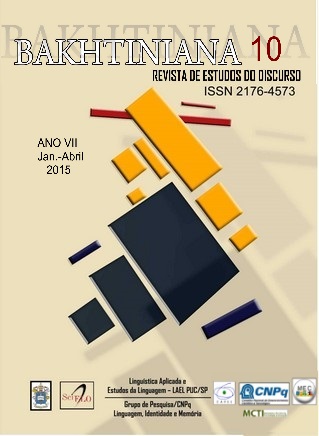Chronotope and Metaphor as Ways of Time-Space Contextual Blending: the Principle of Relativity in Literature
Keywords:
Literary Style, Chronotope, MetaphorAbstract
This paper is an attempt to apply the holistic notion of chronotope suggested by Bakhtin to investigating literary style as a gestalt phenomenon. Style is a complex pattern of mutually reciprocal elements, and Bakhtin’s chronotope was the first in literary analysis to link at least two elements – time and space – as complementary, i.e., as combined to enhance and emphasize each other qualities. The suggested analysis is a tool for deepening our understanding of Vladimir Nabokov’s protagonists’ actions via the time-space matrices they are acting in. The cognitive analytical instruments of analysis are the closely related holistic notions of chronotope and conceptual metaphor.
Metrics
Metrics Loading ...
Downloads
Published
2015-04-30
How to Cite
Tarvi, L. (2015). Chronotope and Metaphor as Ways of Time-Space Contextual Blending: the Principle of Relativity in Literature. Bakhtiniana. Revista De Estudos Do Discurso , 10(1), Port. 193–208 / Eng. 207. Retrieved from https://revistas.pucsp.br/index.php/bakhtiniana/article/view/20664
Issue
Section
Articles









